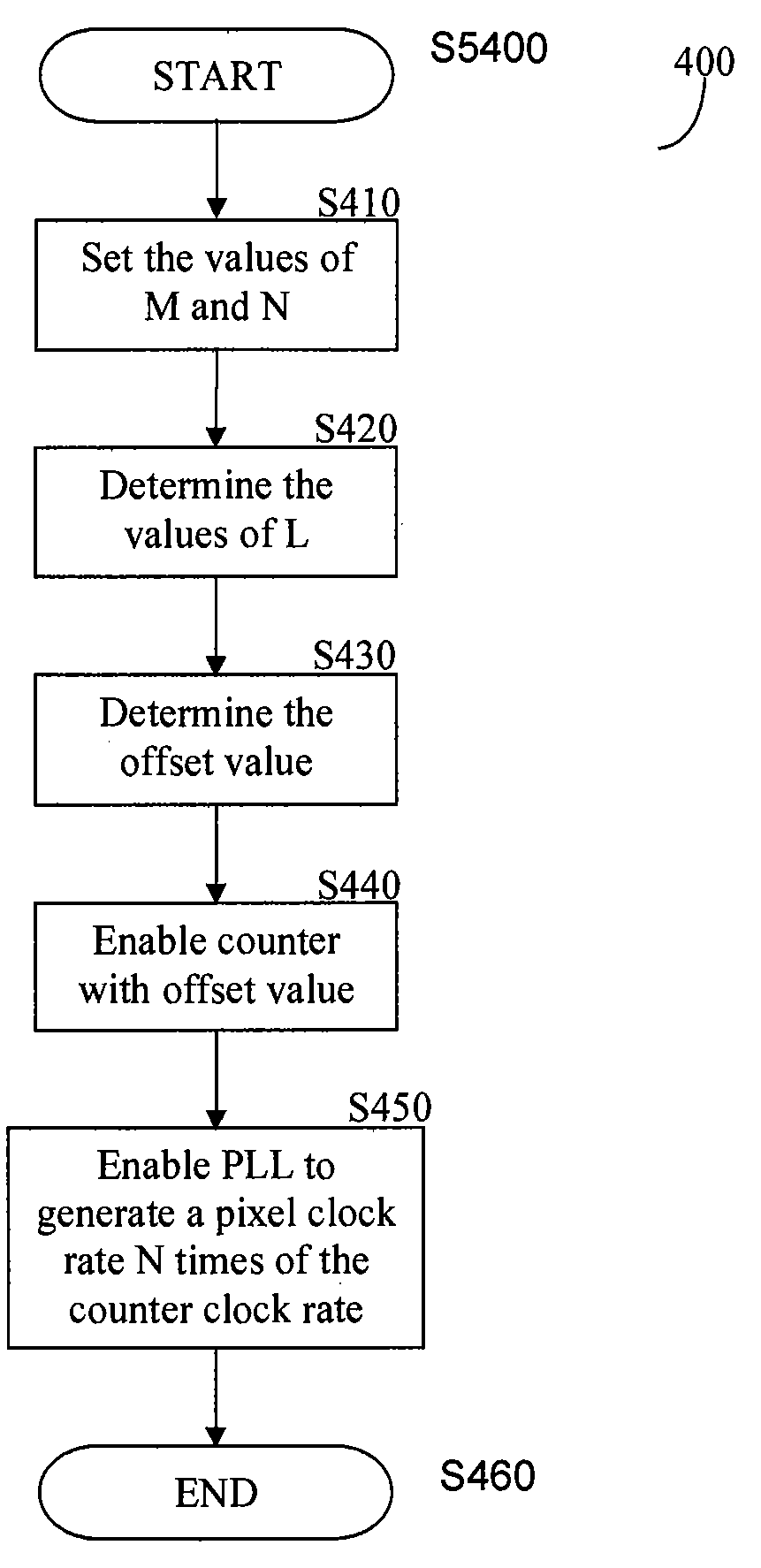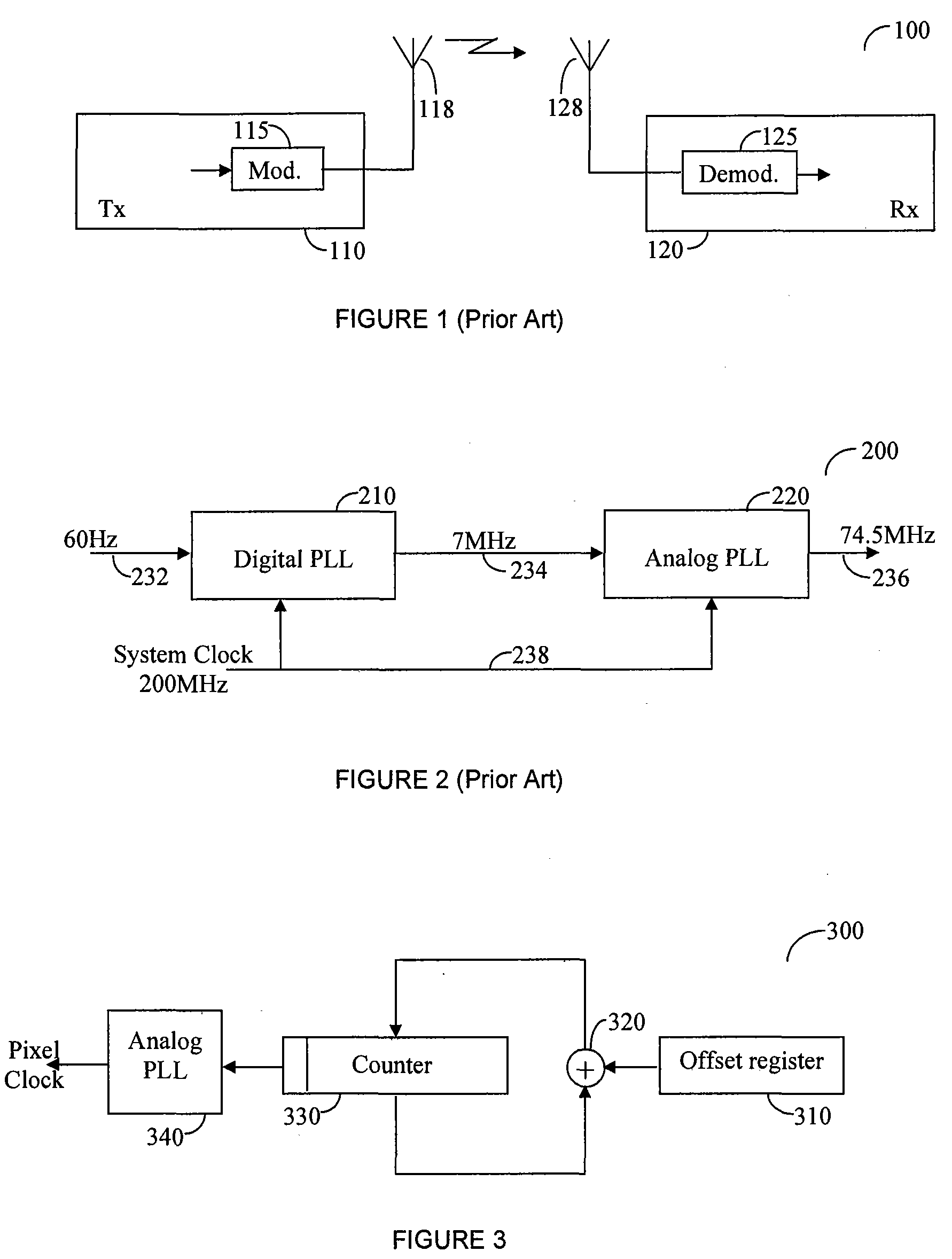Generation of a Frame Synchronized Clock for a Wireless Video Receiver
a wireless video receiver and frame synchronization technology, applied in the direction of television systems, pulse automatic control, cathode-ray tube indicators, etc., can solve the problems of undesirable allocation of such bandwidth for these purposes, inapplicability of prior art solutions, and the amount of bandwidth that is required to send these signals, so as to preserve the use of bandwidth
- Summary
- Abstract
- Description
- Claims
- Application Information
AI Technical Summary
Benefits of technology
Problems solved by technology
Method used
Image
Examples
Embodiment Construction
[0015]In an apparatus that receives an essentially uncompressed HDTV video there is a need to generate an accurate pixel-rate clock for reconstruction of the video frame. The clock that is generated must match the received video rate. To preserve bandwidth, signals for generation of horizontal and vertical synchronization are not transmitted over the wireless link. In accordance with the invention, the start of frame (SOF) indication that is extracted by a symbol detection and synchronization (SDS) module is used in the generation of the pixel clock. In accordance with the invention Hsync information which is transmitted to enable synchronization of the video signal. The invention uses signaling through the wireless link and reports to the receiver when Hsync occurs in the video source. The receiver then generates the video clock from the received signal using, for example, a phase-locked loop (PLL). In this way, the generated video clock adjusts itself in real-time relative to the ...
PUM
 Login to View More
Login to View More Abstract
Description
Claims
Application Information
 Login to View More
Login to View More - R&D
- Intellectual Property
- Life Sciences
- Materials
- Tech Scout
- Unparalleled Data Quality
- Higher Quality Content
- 60% Fewer Hallucinations
Browse by: Latest US Patents, China's latest patents, Technical Efficacy Thesaurus, Application Domain, Technology Topic, Popular Technical Reports.
© 2025 PatSnap. All rights reserved.Legal|Privacy policy|Modern Slavery Act Transparency Statement|Sitemap|About US| Contact US: help@patsnap.com



